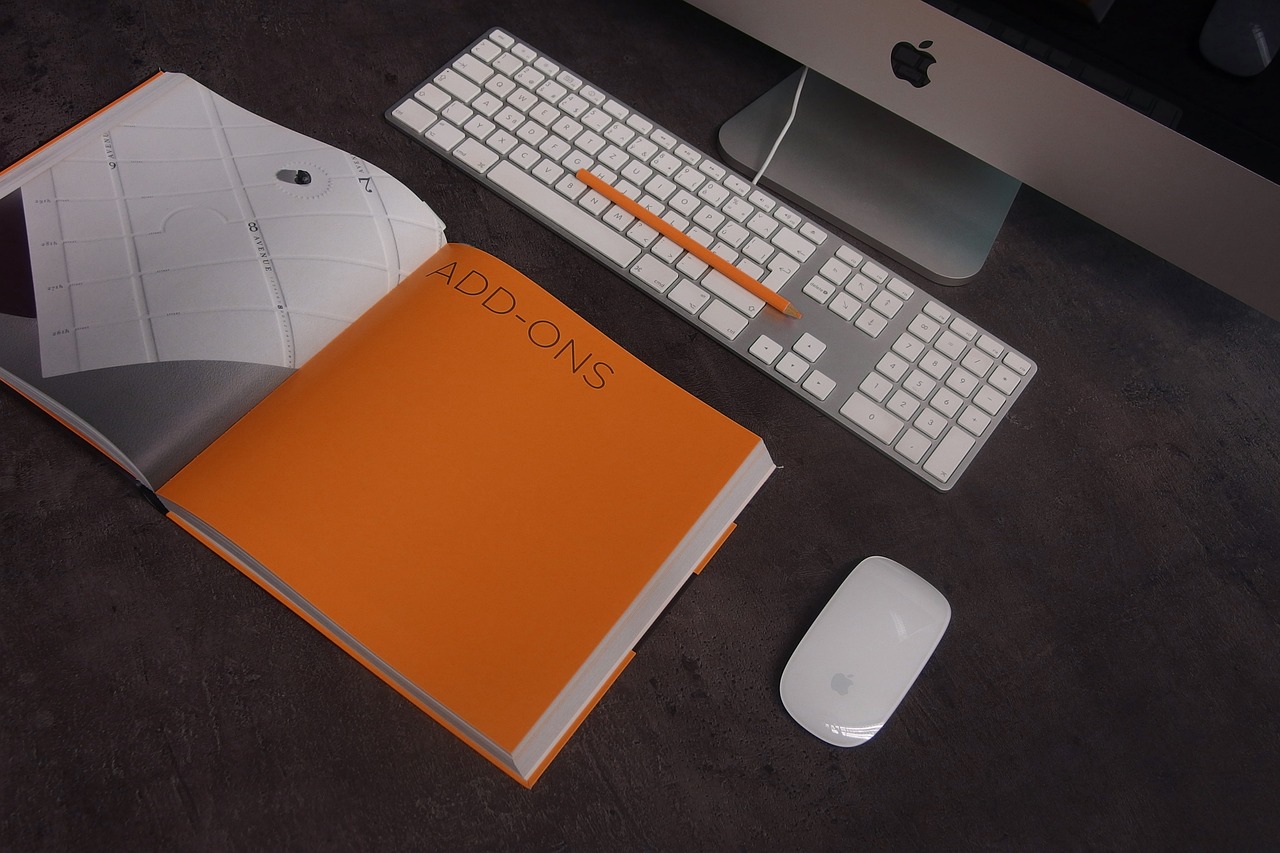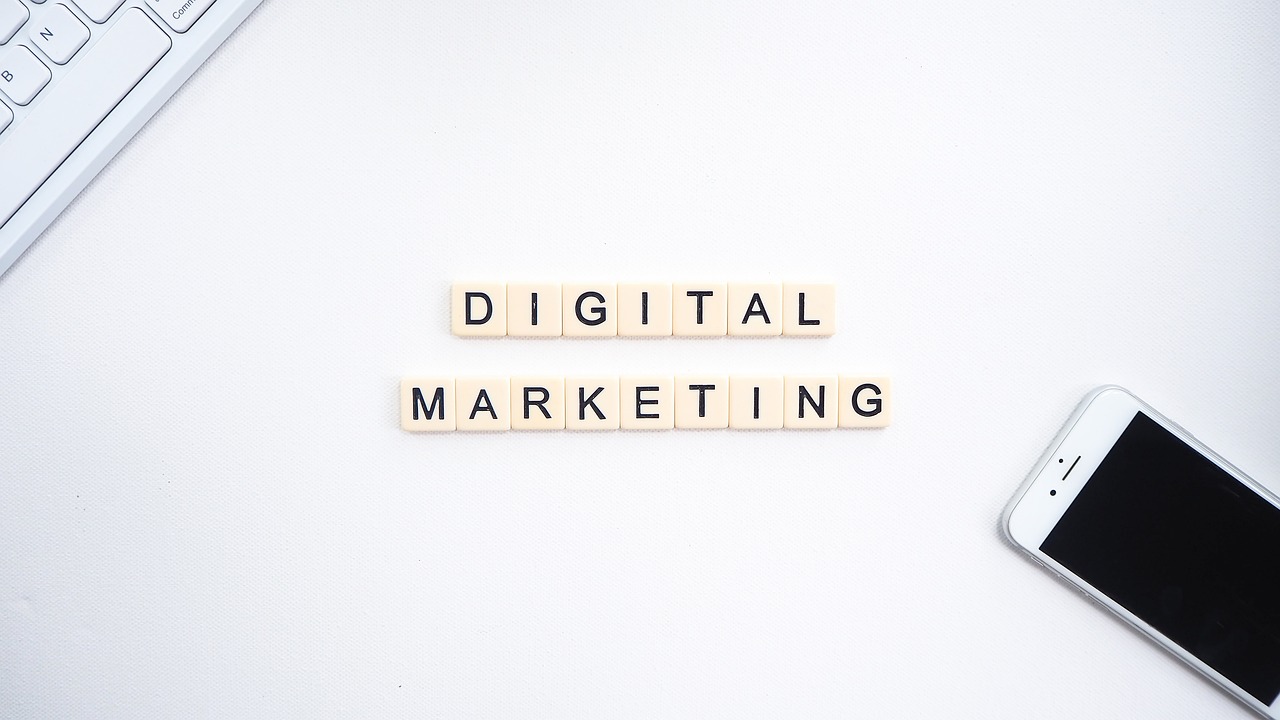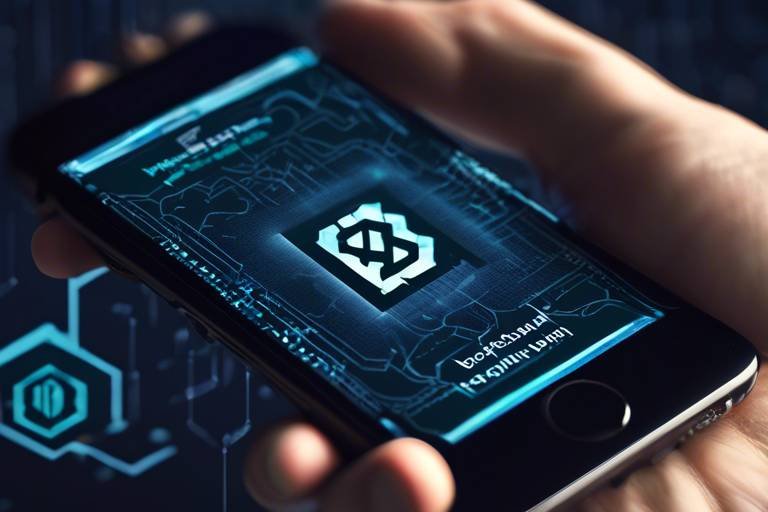The Role of Digital Twins in Blockchain Applications
This article explores how digital twins integrate with blockchain technology, enhancing various industries through improved data management, security, and operational efficiency. In today's fast-paced world, the convergence of these two innovative technologies is not just a trend; it's a revolution that promises to redefine how businesses operate. Imagine having a virtual counterpart for every physical entity you manage - that's the essence of digital twins. Now, pair that with the security and transparency of blockchain, and you have a powerhouse duo capable of transforming entire sectors.
Digital twins are virtual replicas of physical entities that simulate real-world conditions, enabling better analysis and decision-making in various sectors such as manufacturing, healthcare, and smart cities. Think of a digital twin as a sophisticated mirror that reflects not just the physical characteristics of an object but also its behavior and performance over time. By harnessing data from sensors and IoT devices, digital twins provide a dynamic view of operations, allowing organizations to predict outcomes and optimize processes. This level of insight is invaluable, especially in industries where precision and efficiency are paramount.
Blockchain is a decentralized ledger technology that ensures transparency and security in transactions. Understanding its core principles is essential for grasping how it interacts with digital twins. At its core, blockchain operates on a network of nodes that validate and record transactions in a way that is tamper-proof and transparent. This means that once data is entered into the blockchain, it cannot be altered without consensus from the network participants. This characteristic is crucial when paired with digital twins, as it guarantees that the data these virtual replicas rely on is both accurate and trustworthy.
Combining digital twins with blockchain creates a powerful synergy, allowing for secure data sharing and real-time updates, which enhances operational efficiency and trust across industries. For instance, in manufacturing, a digital twin can provide real-time data about machine performance, while blockchain can record that data securely, ensuring that all stakeholders have access to the same information. This not only enhances collaboration but also reduces the risk of errors and miscommunication. The result? A more streamlined operation that can adapt quickly to changes in demand or potential issues.
Blockchain's immutable nature ensures the integrity of data generated by digital twins, safeguarding against tampering and unauthorized access, which is crucial for industries like healthcare and finance. Imagine a scenario where patient data from a digital twin of a medical device is recorded on a blockchain. This not only protects sensitive information but also provides a clear audit trail, ensuring compliance with regulations and fostering trust among patients and providers alike. In a world where data breaches are increasingly common, this level of security is not just beneficial; it's essential.
With digital twins operating on blockchain, organizations can achieve real-time monitoring and analytics, enabling proactive decision-making and optimizing resource management in various applications. For example, energy companies can use digital twins to monitor the performance of their power plants, while blockchain ensures that the data collected is accurate and secure. This combination allows for immediate insights into operational efficiency, enabling companies to make informed decisions that can lead to cost savings and improved service delivery.
Numerous industries are leveraging the combination of digital twins and blockchain, including manufacturing, logistics, and energy, to streamline processes and enhance accountability. Here are a few noteworthy examples:
- Manufacturing: Digital twins monitor machinery health, while blockchain tracks maintenance records, ensuring transparency and accountability.
- Logistics: Digital twins of shipping containers can provide real-time location data, and blockchain can verify the integrity of the goods being transported.
- Energy: Digital twins of energy grids can optimize distribution, and blockchain can facilitate secure transactions between producers and consumers.
Despite their potential, integrating digital twins with blockchain faces challenges such as scalability, data privacy concerns, and the need for standardization across platforms. As exciting as this technology is, it's crucial to address these hurdles to fully realize its benefits.
As the number of digital twins increases, scalability becomes a concern, requiring innovative solutions to maintain performance and efficiency within blockchain systems. Imagine a scenario where millions of devices are generating data simultaneously; without a robust framework, the blockchain could become congested, leading to delays and inefficiencies. Therefore, developing scalable solutions is essential for the widespread adoption of this technology.
Balancing transparency with data privacy is essential when using blockchain with digital twins, necessitating strategies to protect sensitive information while ensuring accountability. Organizations must navigate the fine line between sharing data for transparency and protecting proprietary or personal information. This requires a thoughtful approach to data governance and security protocols.
1. What are digital twins?
Digital twins are virtual models of physical objects or systems, designed to simulate their behavior and performance in real-time.
2. How does blockchain enhance digital twins?
Blockchain provides a secure, immutable record of data generated by digital twins, ensuring data integrity and facilitating trust among stakeholders.
3. What industries benefit from this technology?
Industries such as manufacturing, healthcare, logistics, and energy are leveraging the combination of digital twins and blockchain for improved efficiency and accountability.
4. What are the main challenges?
Key challenges include scalability, data privacy concerns, and the need for standardization across platforms.

[Understanding Digital Twins]
Digital twins are revolutionizing the way we interact with the physical world. Imagine having a virtual replica of a real-world entity—whether it's a machine, a building, or even a human body—that behaves just like its physical counterpart. This is precisely what digital twins offer: a dynamic simulation that mirrors real-world conditions in real-time. By harnessing the power of data, these digital counterparts allow organizations across various sectors to enhance their analysis and decision-making processes significantly.
In essence, a digital twin acts as a bridge between the physical and digital realms. When we think about industries such as manufacturing, healthcare, or smart cities, the applications of digital twins become even more apparent. For instance, in manufacturing, a digital twin of a production line can provide insights into efficiency, predicting when machinery might fail and allowing for preventive maintenance. In healthcare, a digital twin of a patient can help doctors simulate treatment outcomes based on various scenarios, leading to more personalized and effective care.
The data that fuels these digital twins is collected from various sensors and IoT devices, creating a feedback loop that continuously updates the digital model based on real-world changes. This is where the magic happens—organizations can run simulations, analyze trends, and make data-driven decisions that were previously unimaginable. For example, a city can use digital twins to monitor traffic patterns, optimizing traffic flow and reducing congestion in real-time.
However, the true potential of digital twins is unlocked when they are integrated with other technologies, such as blockchain. By combining these two powerful tools, organizations can enhance data integrity, security, and operational efficiency. The synergy between digital twins and blockchain creates a robust framework for managing complex systems, ensuring that every piece of data is accurate and tamper-proof.
To summarize, digital twins are not just a trend; they represent a fundamental shift in how we operate across industries. With their ability to simulate real-world conditions and provide actionable insights, they are paving the way for smarter, more efficient systems. As we continue to explore their potential, it becomes clear that the future of technology lies in the seamless integration of the digital and physical worlds.

[Blockchain Fundamentals]
Blockchain technology has taken the world by storm, and for good reason. At its core, blockchain is a decentralized ledger that records transactions across multiple computers in such a way that the registered transactions cannot be altered retroactively. This unique structure ensures that every participant in the network has access to the same data, promoting transparency and trust. Imagine a digital notebook that everyone can see and write in, but once something is written, it can't be erased or changed. That's the beauty of blockchain!
To truly grasp how blockchain works, let’s break down its fundamental components:
- Blocks: Each block in a blockchain contains a number of transactions. When a block is filled, it is closed and linked to the previous block, forming a chain. This chain is what gives blockchain its name.
- Nodes: These are the individual computers that participate in the blockchain network. They validate and relay transactions, ensuring that the system remains decentralized.
- Consensus Mechanisms: To add a new block, nodes must agree on its validity through mechanisms like Proof of Work or Proof of Stake. This agreement is crucial for maintaining the integrity of the blockchain.
What's fascinating about blockchain is its immutable nature. Once a transaction is recorded, it cannot be altered without the consensus of the network. This feature is especially vital in sectors like finance, where trust and accuracy are paramount. For instance, if a bank transaction is recorded on a blockchain, that record becomes a permanent part of the ledger, visible to all participants. This drastically reduces the chances of fraud and enhances accountability.
Another key aspect of blockchain is its ability to enhance security. Traditional databases are often targets for cyberattacks, whereas blockchain’s decentralized nature makes it significantly harder for hackers to manipulate data. Since there is no central point of failure, an attacker would need to compromise multiple nodes simultaneously to alter any information, which is virtually impossible in a well-distributed network.
In summary, understanding blockchain fundamentals is essential for appreciating its integration with digital twins. The combination of these two technologies not only streamlines operations but also fortifies data integrity and security across various industries. As we move forward, the synergy between digital twins and blockchain is set to revolutionize how we manage and interact with data.
- What is blockchain? Blockchain is a decentralized digital ledger that records transactions across multiple computers in a secure and transparent manner.
- How does blockchain ensure data integrity? Blockchain uses an immutable structure where once data is recorded, it cannot be changed without consensus from the network, making it highly secure.
- What are nodes in a blockchain? Nodes are individual computers in the blockchain network that validate and relay transactions, ensuring decentralization.
- Why is blockchain considered secure? Its decentralized nature and consensus mechanisms make it difficult for hackers to manipulate data, as there is no central point of failure.

[The Intersection of Digital Twins and Blockchain]
The fusion of digital twins and blockchain technology is not just a trend; it's a revolution that is reshaping how industries operate. Imagine a world where every physical object has a digital counterpart that continuously updates and communicates with a secure, decentralized ledger. This powerful combination allows for a seamless flow of information, enhancing operational efficiency and trust across various sectors.
At its core, the integration of digital twins with blockchain creates a robust framework for data sharing. Digital twins generate vast amounts of data by simulating real-world conditions, and when this data is recorded on a blockchain, it becomes immutable and accessible to all authorized parties. This means that any changes made to the digital twin are instantly reflected on the blockchain, ensuring that everyone has access to the most up-to-date information. For instance, in the manufacturing sector, this could mean real-time tracking of machinery performance, allowing for predictive maintenance and reducing downtime.
Moreover, the synergy between these two technologies enhances the concept of trust. In industries where data integrity is paramount—such as healthcare and finance—blockchain's inherent security features ensure that the data generated by digital twins cannot be tampered with. This creates a transparent environment where stakeholders can confidently make decisions based on reliable data. Think of it as having a secure vault that not only stores valuable information but also provides a clear record of who accessed it and when.
Another significant advantage of this intersection is the capability for real-time monitoring. By leveraging the power of blockchain, organizations can receive instantaneous updates from their digital twins. This real-time data flow enables companies to react promptly to changes, optimize resource management, and improve overall operational efficiency. For example, in the energy sector, digital twins of power plants can monitor performance metrics and share them on a blockchain, allowing for immediate adjustments to energy distribution based on demand.
In summary, the combination of digital twins and blockchain is not just about technology; it's about creating a new paradigm of operational excellence. This integration fosters a culture of collaboration and innovation, where organizations can harness the full potential of their data while ensuring security and integrity. As we continue to explore this exciting intersection, the possibilities for enhanced efficiency and trust in various industries are boundless.
- What are digital twins? Digital twins are virtual replicas of physical entities that simulate real-world conditions, allowing for better analysis and decision-making.
- How does blockchain enhance digital twins? Blockchain provides a secure, immutable way to store and share data generated by digital twins, ensuring integrity and trust.
- What industries can benefit from this integration? Industries such as manufacturing, healthcare, logistics, and energy can leverage the combination of digital twins and blockchain for improved operational efficiency.
- What are the challenges of integrating these technologies? Challenges include scalability, data privacy concerns, and the need for standardization across platforms.

[Data Integrity and Security]
In today's digital landscape, where data breaches and cyber threats loom large, the integrity and security of data have never been more critical. This is where the combination of digital twins and blockchain technology shines brightly. Imagine a world where every piece of data generated by a digital twin—be it from a manufacturing machine, a healthcare device, or a smart city infrastructure—is not only accurate but also tamper-proof. This is made possible through the immutable nature of blockchain.
To understand this better, consider a digital twin of a wind turbine. As it operates, it generates vast amounts of data regarding its performance, maintenance needs, and environmental conditions. If this data is stored on a blockchain, it becomes virtually impossible for anyone to alter it without leaving a trace. This feature is particularly crucial in industries such as healthcare and finance, where even minor data manipulation can lead to catastrophic consequences.
Furthermore, blockchain enhances data security by decentralizing storage. Instead of being housed in a single vulnerable location, data from digital twins can be distributed across a network of nodes. This reduces the risk of a single point of failure. If one node is compromised, the rest of the network remains intact, thus protecting the integrity of the data. This decentralized approach not only bolsters security but also fosters trust among stakeholders, who can independently verify the data without relying on a central authority.
One of the most compelling aspects of this synergy is the ability to create a transparent audit trail. Each interaction with the data—be it an update, modification, or access—is recorded on the blockchain. This means that organizations can track who accessed the data, when, and what changes were made. Such transparency is invaluable, particularly in regulated industries where compliance with standards and regulations is paramount.
However, while the integration of digital twins and blockchain offers robust solutions for data integrity and security, it is essential to recognize the challenges that come with it. For instance, the complexity of managing blockchain networks can introduce new vulnerabilities if not handled properly. Organizations must invest in the right technologies and training to ensure that they can effectively utilize this powerful combination.
In conclusion, the marriage of digital twins and blockchain technology creates a formidable alliance in the realm of data integrity and security. As industries continue to evolve and embrace digital transformation, the importance of safeguarding data will only grow. By leveraging these technologies, organizations can not only protect their data but also enhance their operational efficiency and build greater trust with their clients and stakeholders.

[Real-time Monitoring and Analytics]
In today's fast-paced world, real-time monitoring and analytics have become more than just buzzwords; they are essential components for businesses aiming to stay competitive. By integrating digital twins with blockchain technology, organizations can harness the power of real-time data to make informed decisions swiftly. Imagine a manufacturing plant where every machine is represented by a digital twin. These virtual replicas continuously collect data about machine performance, operational efficiency, and even potential failures. Now, couple that with blockchain's secure and transparent ledger, and you have a system that not only monitors the machines but also records every transaction and change in a tamper-proof manner.
One of the standout features of this integration is the ability to conduct real-time analytics. With data flowing seamlessly from digital twins to the blockchain, organizations can analyze trends and anomalies as they happen. For instance, if a digital twin detects that a machine is operating outside its normal parameters, the data is instantly recorded on the blockchain, alerting the maintenance team before a minor issue escalates into a costly breakdown. This proactive approach not only saves money but also enhances safety and productivity.
Moreover, the visualization of data becomes significantly enhanced through this integration. Organizations can create dashboards that display real-time analytics derived from digital twins, allowing decision-makers to grasp complex data quickly. Imagine having a control room where operators can see live feeds of machine performance, energy consumption, and even supply chain logistics all in one place. This kind of visibility is invaluable for optimizing operations and ensuring that resources are allocated efficiently.
To illustrate the benefits of real-time monitoring and analytics, consider the following key advantages:
- Proactive Decision-Making: Organizations can act on data before issues arise, preventing downtime and inefficiencies.
- Enhanced Resource Management: By understanding real-time data, companies can optimize their resource allocation and reduce waste.
- Improved Customer Satisfaction: Faster response times and better quality control lead to higher customer satisfaction and loyalty.
In summary, the combination of digital twins and blockchain technology is revolutionizing the way organizations approach real-time monitoring and analytics. By leveraging these advanced technologies, businesses can not only enhance their operational efficiency but also create a more resilient and responsive environment. The future is here, and it's driven by data!
- What are digital twins? Digital twins are virtual replicas of physical entities that simulate real-world conditions, enabling better analysis and decision-making.
- How does blockchain enhance digital twins? Blockchain provides a secure and transparent ledger for data generated by digital twins, ensuring data integrity and preventing tampering.
- What industries benefit from this integration? Industries such as manufacturing, healthcare, logistics, and energy are leveraging the combination of digital twins and blockchain for enhanced operational efficiency.
- What are the main challenges of integrating these technologies? Scalability, data privacy concerns, and the need for standardization are significant challenges faced during integration.

[Use Cases in Various Industries]
The integration of digital twins and blockchain technology is revolutionizing numerous industries, paving the way for enhanced operational efficiency and accountability. Let's dive into some of the most compelling use cases that illustrate this powerful combination.
In the manufacturing sector, digital twins are used to create virtual representations of production processes. By integrating these twins with blockchain, manufacturers can track the entire lifecycle of their products, from raw materials to finished goods. This not only improves supply chain transparency but also allows for real-time updates on the status of production. Imagine being able to pinpoint where a bottleneck occurs in your manufacturing line instantly—this is the kind of operational insight that digital twins provide when combined with blockchain.
Another fascinating application is found in logistics. Companies can utilize digital twins to monitor the condition and location of goods in transit. By recording this data on a blockchain, stakeholders can access a tamper-proof record of every shipment, ensuring that products are delivered in optimal condition. This is particularly crucial for perishable items or high-value goods, where any deviation from the expected conditions can lead to significant losses. The synergy of these technologies not only enhances accountability but also fosters trust among partners in the supply chain.
In the realm of energy management, digital twins can simulate energy consumption patterns for buildings or entire grids. When paired with blockchain, this data can be securely shared among various stakeholders, such as energy producers and consumers. As a result, energy distribution can be optimized, leading to reduced costs and improved sustainability. For instance, if a digital twin indicates that a certain building is using more energy than expected, immediate adjustments can be made to address inefficiencies, all while maintaining a secure record of energy usage on the blockchain.
Moreover, the healthcare industry stands to gain immensely from this integration. Digital twins of patients can be created to monitor health metrics and treatment responses. By using blockchain to securely store and share this sensitive information, healthcare providers can ensure that patient data remains private and tamper-proof. This not only enhances patient trust but also improves the quality of care, as doctors can make informed decisions based on accurate and up-to-date information. Imagine a scenario where a doctor can access a patient's digital twin and see a history of all treatments and responses, all securely stored on a blockchain—this is the future of personalized medicine.
To summarize, the fusion of digital twins and blockchain is not just a technological advancement; it's a transformative force across various industries. Below is a table that highlights some of the key benefits derived from this integration:
| Industry | Use Case | Benefits |
|---|---|---|
| Manufacturing | Production process tracking | Improved transparency and real-time updates |
| Logistics | Monitoring goods in transit | Tamper-proof shipment records and enhanced accountability |
| Energy | Energy consumption simulation | Optimized distribution and reduced costs |
| Healthcare | Patient monitoring | Secure data sharing and improved quality of care |
As we can see, the potential use cases for digital twins and blockchain are vast and varied, each contributing to a more efficient, transparent, and secure future across multiple sectors. The journey towards full integration may have its challenges, but the rewards are certainly worth the effort.
Q1: What are digital twins?
Digital twins are virtual replicas of physical entities that simulate real-world conditions, allowing for better analysis and decision-making.
Q2: How does blockchain enhance the functionality of digital twins?
Blockchain provides a secure, immutable ledger for the data generated by digital twins, ensuring data integrity and enabling secure sharing across stakeholders.
Q3: In which industries are digital twins and blockchain being used together?
They are being used in various industries, including manufacturing, logistics, energy, and healthcare, to enhance operational efficiency and accountability.
Q4: What are some challenges of integrating digital twins with blockchain?
Challenges include scalability, data privacy concerns, and the need for standardization across platforms.

[Challenges and Limitations]
While the integration of digital twins and blockchain presents a myriad of opportunities, it is not without its challenges and limitations. These hurdles can hinder the seamless adoption of this innovative technology across various sectors. One of the primary concerns is scalability. As the number of digital twins increases, the blockchain network must handle a significantly higher volume of data transactions. This can lead to performance bottlenecks, making it essential to develop innovative solutions that can maintain efficiency without compromising on speed or reliability.
Another critical challenge is data privacy. While blockchain is celebrated for its transparency, this very characteristic can pose a dilemma when sensitive information is involved. Industries such as healthcare and finance, which deal with confidential data, must find a way to balance the need for accountability with the necessity of protecting personal information. This often requires the implementation of sophisticated encryption techniques and privacy-preserving protocols to ensure that sensitive data remains secure while still being verifiable.
Furthermore, the lack of standardization across different blockchain platforms can complicate the integration process. Without universally accepted protocols, organizations may face compatibility issues, leading to increased costs and extended timelines for implementation. This fragmentation can stifle innovation, as companies may be hesitant to invest in technologies that may not work seamlessly with existing systems.
In addition to these challenges, organizations must also consider the cost implications associated with adopting both digital twins and blockchain technology. The initial investment in infrastructure, training, and maintenance can be significant, which may deter smaller companies from exploring these advancements. However, the long-term benefits of improved operational efficiency and data integrity often outweigh these initial costs, making it crucial for businesses to weigh their options carefully.
Lastly, there is the issue of regulatory compliance. As blockchain technology continues to evolve, so too do the regulations surrounding its use. Companies must stay abreast of changing laws and ensure that their implementations comply with local and international standards. This can be a daunting task, especially for organizations operating in multiple jurisdictions, where regulations may vary widely.
In summary, while the combination of digital twins and blockchain holds immense potential, it is essential to address these challenges proactively. By investing in innovative solutions, prioritizing data privacy, and advocating for standardization, industries can unlock the full benefits of this powerful synergy.
- What are digital twins?
Digital twins are virtual replicas of physical entities that allow for real-time monitoring and analysis, improving decision-making across various sectors.
- How does blockchain enhance digital twins?
Blockchain provides a secure, transparent platform for data sharing, ensuring data integrity and enabling real-time updates for digital twins.
- What are the main challenges of integrating digital twins and blockchain?
Key challenges include scalability, data privacy, lack of standardization, cost implications, and regulatory compliance.
- Why is data privacy a concern with blockchain?
Blockchain's transparency can conflict with the need to protect sensitive information, making it crucial to implement privacy-preserving measures.

[Scalability Issues]
As we delve deeper into the integration of digital twins and blockchain technology, one of the most pressing concerns that arise is scalability. Imagine a bustling city where every building is a digital twin, constantly generating and sharing data on blockchain. As the population grows and more buildings are added, the infrastructure must adapt to handle the increased load. Similarly, in the digital realm, as the number of digital twins expands, the blockchain must maintain its performance and efficiency. This challenge is not merely technical but requires innovative thinking and strategic planning.
The fundamental issue lies in the architecture of blockchain itself. Traditional blockchain systems, particularly those that rely on proof-of-work mechanisms, can struggle with high transaction volumes. This is akin to a busy highway during rush hour; the more cars trying to pass through, the slower the traffic moves. When digital twins generate a vast amount of data in real-time, the blockchain network can become congested, leading to delays and increased costs. To illustrate this, consider the following table that highlights the potential bottlenecks in scalability:
| Scalability Factor | Potential Impact |
|---|---|
| Transaction Speed | Slower data processing and increased latency |
| Network Congestion | Higher transaction fees and potential data loss |
| Data Storage | Challenges in maintaining a complete and accurate ledger |
To tackle these scalability issues, several solutions are being explored. For instance, layer-2 solutions such as sidechains or state channels can help alleviate the burden on the main blockchain by processing transactions off-chain and then settling them back on the main chain. This is like having an express lane at a toll booth; it allows for faster movement without compromising the integrity of the overall system. Additionally, the implementation of sharding, where the blockchain is divided into smaller, more manageable pieces, can significantly enhance scalability. Each shard can process transactions independently, which could lead to a substantial increase in throughput.
However, it's essential to recognize that these solutions come with their own set of challenges. For example, while layer-2 solutions can increase speed, they may introduce complexities in data synchronization and security. Thus, as we strive for scalability, we must also ensure that we do not compromise the very principles that make blockchain a trusted technology in the first place.
In conclusion, addressing scalability in the context of digital twins and blockchain is crucial for the technology's broader adoption across industries. It requires a balanced approach that considers both the technical aspects of blockchain and the practical implications of integrating numerous digital twins. As we continue to innovate and develop new strategies, the goal remains clear: to create a robust, efficient, and scalable ecosystem that maximizes the benefits of both digital twins and blockchain technology.
- What are digital twins? Digital twins are virtual replicas of physical entities, allowing for real-time monitoring and analysis.
- How does blockchain enhance digital twins? Blockchain provides a secure and transparent way to manage the data generated by digital twins.
- What are the main challenges of integrating digital twins with blockchain? Key challenges include scalability, data privacy, and the need for standardization.
- What solutions exist for scalability issues? Solutions include layer-2 technologies and sharding to improve transaction speeds and reduce congestion.

[Data Privacy Considerations]
In the rapidly evolving landscape of technology, where digital twins and blockchain are making waves, the issue of data privacy has emerged as a critical concern. While blockchain offers unparalleled transparency and security, it also raises questions about how sensitive information is handled. After all, in a world where data breaches are alarmingly common, how do we ensure that our private information remains protected?
When integrating digital twins with blockchain, organizations must navigate a delicate balance between transparency and privacy. On one hand, the immutable nature of blockchain ensures that once data is recorded, it cannot be altered or deleted, which is fantastic for maintaining data integrity. However, this same feature can become a double-edged sword when it comes to personal or sensitive data. Imagine a scenario where a digital twin of a patient in a healthcare system is created. If that data is stored on a public blockchain, it could potentially expose sensitive health information, leading to severe privacy violations.
To address these challenges, organizations can consider implementing several strategies:
- Data Encryption: Encrypting data before it is stored on the blockchain can help protect sensitive information from unauthorized access. This ensures that even if data is intercepted, it remains unreadable without the proper decryption keys.
- Permissioned Blockchains: Utilizing permissioned blockchains allows organizations to control who has access to the data. This way, only authorized users can interact with the digital twins, ensuring that sensitive information is not publicly accessible.
- Data Minimization: Only collecting and storing data that is absolutely necessary for the functioning of the digital twin can significantly reduce privacy risks. By minimizing the amount of sensitive information stored, organizations can lower the chances of data breaches.
Moreover, regulatory frameworks such as the General Data Protection Regulation (GDPR) in Europe and similar laws worldwide compel organizations to adopt stringent data protection measures. These regulations require businesses to be transparent about how they collect, use, and store personal data, which aligns well with the principles of blockchain technology. By ensuring compliance with these regulations, organizations can foster trust among users, making them more likely to embrace digital twins and blockchain solutions.
As we look to the future, the intersection of digital twins and blockchain offers incredible potential, but it also necessitates a proactive approach to data privacy. Organizations must be willing to invest in the right technologies and strategies to protect sensitive information while reaping the benefits of these innovative technologies. The challenge lies not just in the technology itself, but in how we choose to use it responsibly.
Q1: What are digital twins?
Digital twins are virtual replicas of physical entities that simulate real-world conditions, allowing for better analysis and decision-making.
Q2: How does blockchain enhance data security?
Blockchain technology provides an immutable ledger that ensures data integrity, making it difficult for unauthorized users to tamper with information.
Q3: What are the main challenges of integrating digital twins with blockchain?
The main challenges include scalability issues, data privacy concerns, and the need for standardization across platforms.
Q4: How can organizations protect sensitive data on the blockchain?
Organizations can implement strategies like data encryption, using permissioned blockchains, and data minimization to safeguard sensitive information.
Q5: Are there regulations governing data privacy in blockchain applications?
Yes, regulations like the GDPR require organizations to maintain transparency and protect personal data, which is crucial when using blockchain technology.
Frequently Asked Questions
- What are digital twins?
Digital twins are virtual replicas of physical entities, like machines or systems, that simulate real-world conditions. They allow organizations to analyze performance, predict outcomes, and make informed decisions based on real-time data.
- How does blockchain enhance digital twins?
Blockchain enhances digital twins by providing a secure, decentralized ledger for data management. This ensures data integrity, prevents tampering, and allows for secure sharing of information across different stakeholders.
- What industries benefit from the combination of digital twins and blockchain?
Several industries benefit from this combination, including manufacturing, logistics, healthcare, and energy. Each sector uses digital twins and blockchain to improve operational efficiency, enhance accountability, and streamline processes.
- What are the main challenges in integrating digital twins with blockchain?
The integration faces challenges such as scalability, data privacy concerns, and the need for standardization across platforms. These issues need to be addressed to fully leverage the potential of both technologies.
- How do digital twins enable real-time monitoring?
Digital twins, when integrated with blockchain, allow organizations to monitor systems in real-time. This capability enables proactive decision-making and optimization of resources, leading to better operational outcomes.
- What is the importance of data integrity in this context?
Data integrity is crucial because it ensures that the information generated by digital twins is accurate and trustworthy. Blockchain's immutable nature helps maintain this integrity, which is especially important in sensitive industries like healthcare and finance.
- Can digital twins be used for predictive analytics?
Absolutely! Digital twins can analyze historical data and current conditions to predict future outcomes, making them invaluable for maintenance scheduling, resource allocation, and risk management.
- Is data privacy a concern with blockchain and digital twins?
Yes, balancing transparency with data privacy is essential. Organizations need to implement strategies that protect sensitive information while still benefiting from the accountability that blockchain offers.



















